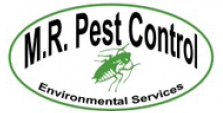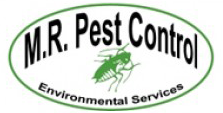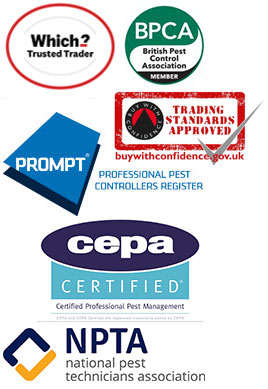Understanding Bed Bug Infestations
Recognising the signs of bed bug infestations is crucial for timely intervention. These pests can cause significant distress and discomfort if left untreated.
Signs of Bed Bug Infestation
Identifying bed bug infestations early can prevent them from becoming severe. Key signs to look for include:
- Bites: Red, itchy bumps often appear in lines or clusters on exposed skin, typically around the neck, shoulders, back, or arms.
- Excrement: Small, reddish-brown spots found on bedding, mattresses, or furniture signify bed bug faeces.
- Blood Smears: Tiny blood stains on bed linens or headboards indicate bed bug feeding.
- Shed Skin: As bed bugs mature, they shed their exoskeletons, which may be visible in areas where they hide.
- Eggs or Eggshells: These tiny, translucent eggs or white shells can be found near their hiding spots, often overlooked due to their size.
Awareness of these signs helps us act promptly, reducing the likelihood of a severe infestation spreading throughout our living spaces.
Common Sources of Bed Bugs
Understanding where bed bugs commonly reside can aid in prevention. They often inhabit places such as:
- Beds and Bedding: Mattresses, box springs, and bed frames provide ideal harborage due to their proximity to human hosts.
- Furniture: Used or second-hand furniture that hasn’t been properly inspected can be a significant source of infestation.
- Clothing and Luggage: Bed bugs can easily hitch a ride on clothing and inside luggage, particularly after travel or staying in hotels.
- Public Areas: High-traffic venues like hotels, hostels, and rental properties are more susceptible to infestations due to a constant flow of people.
- Cluttered Spaces: Excess clutter offers many hiding spots, making it easier for bed bugs to thrive undetected.
Identifying and addressing these sources are essential for us to minimise the risk of bed bug infestations in our homes.
Overview of Pest Control Services
Pest control services provide essential support in managing and eliminating bed bug infestations in London. Understanding how these services operate and the various treatment methods available helps us make informed decisions.
How Pest Control Services Work
Pest control services typically follow a structured process to address infestations. Technicians start with a thorough inspection of the affected areas, identifying the extent of the infestation and potential breeding sites. They communicate findings with us, ensuring we understand their approach. Following the assessment, technicians develop a tailored treatment plan based on specific needs and preferences. Continuous monitoring and follow-ups help prevent reinfestation, ensuring long-term effectiveness.
Types of Treatment Methods
Various treatment methods exist to tackle bed bug issues effectively.
- Chemical Sprays: Standard insecticides target bed bugs directly, effectively eliminating them. Applicators ensure that products used are safe for residential environments.
- Heat Treatments: High-temperature treatments kill bed bugs at every life stage. We find this method particularly useful, as it avoids chemical exposure.
- Steam Treatment: Steam penetrates cracks and crevices, killing bed bugs on contact. It’s an eco-friendly option for us, maintaining a clean environment.
- Integrated Pest Management (IPM): This holistic approach combines biological, cultural, physical, and chemical strategies. It minimises economic, health, and environmental risks, offering sustainable pest control options.
Understanding these treatment options ensures we select the best solution for comprehensive bed bug management.
Effective Bed Bug Removal Techniques
Effective bed bug removal requires a comprehensive understanding of various techniques. We focus on two primary methods: chemical treatments and heat treatments, each tailored to specific infestations.
Chemical Treatments vs Heat Treatments
Chemical treatments involve the application of insecticides to kill bed bugs on contact and in hidden areas. Pest control professionals spray insecticides on surfaces, cracks, and crevices. While effective, this method often necessitates multiple applications to target bed bug eggs, which are protected within their shells.
Heat treatments, however, provide a potent alternative. They raise temperatures to between 49°C and 60°C, killing bed bugs and their eggs at all life stages in a single visit. Bed bugs cannot develop resistance to heat, making this method highly effective. Additionally, heat treatments are chemical-free, eliminating health concerns related to residues or odours. This approach also minimises disruption, allowing us to return to a treated property on the same day.
Steps for Professional Bed Bug Extermination
Our approach to professional bed bug extermination includes several essential steps:
- Inspection: We conduct a thorough inspection to identify the extent of the infestation, locating bed bugs and determining the best treatment strategy.
- Preparation: We recommend relocating pets and washing infected bedding and clothing at high temperatures (60°C-90°C) to prevent cross-contamination.
- Treatment Application: We apply the chosen treatment—either chemicals or heat—ensuring all infested areas are thoroughly addressed.
- Post-Treatment Follow-Up: We schedule follow-up visits to monitor progress and assess for any signs of reinfestation, allowing for timely intervention if necessary.
This structured approach ensures effective bed bug removal and minimises the risk of future infestations.
Cost of Bed Bug Control in London
Understanding the cost of bed bug control services in London involves analysing various factors and comparing different treatment options. Our goal is to provide clarity on pricing structures to help you make informed decisions.
Factors Affecting Treatment Costs
Several factors influence the costs associated with bed bug control treatments. These include:
- Infestation Severity: The level of infestation—ranging from minor to severe—affects the complexity of the treatment plan and the associated costs.
- Property Size: Larger properties may require more resources and time, increasing overall treatment expenses.
- Treatment Method: Different methods, such as chemical sprays, steam treatments, or heat treatments, carry varying costs based on their application and effectiveness.
- Location: Pricing can vary across different areas in London. Urban areas may experience higher operational costs.
- Follow-Up Treatments: Additional costs may arise from necessary follow-up visits to ensure complete elimination of bed bugs.
Comparative Analysis of Different Services
When comparing pest control services, consider the following aspects:
- Service Providers: Some firms specialise exclusively in bed bug treatments, ensuring expertise that may reflect in their pricing.
- Service Packages: Comprehensive packages including inspections, treatments, and follow-ups may offer better value for more severe infestations.
- Reputation and Certification: Companies with certifications, such as British Pest Control Association membership, often justify higher costs with proven efficiency and reliability.
- Techniques Used: Innovative methods like heat treatment may be priced higher upfront but yield quicker and more effective results, potentially reducing costs in the long term.
By evaluating these factors and comparing services, we can effectively navigate the costs associated with bed bug control in London, ensuring we select the most suitable option for our needs.
Customer Experiences and Reviews
Customer experiences provide valuable insights into pest control services for bed bugs in London. We gathered feedback from various clients to highlight common concerns and the importance of reliable service providers.
Common Customer Feedback
Clients frequently mention the relief felt after effective treatments. Many report significant improvements within days, citing rapid removal of bed bugs and a return to normalcy in their homes. Satisfaction often stems from thorough inspections and tailored treatment plans.
Clients appreciate transparent communication throughout the process. Clear explanations of treatment options help them feel informed and confident in their choices. Positive experiences with friendly and professional technicians enhance overall satisfaction. Examples of notable feedback include:
- Timeliness: Most customers express gratitude for punctual service, as quick intervention is crucial during an infestation.
- Effectiveness: Many highlight successful eradication after a single visit, primarily with heat treatments.
- Follow-Up Support: Clients value follow-up visits to ensure complete pest elimination and to address any lingering concerns.
Importance of Choosing a Reliable Service
Selecting a trustworthy pest control service is essential for effective bed bug management. Clients typically emphasise the need to research and review various service providers. Important factors to consider include:
- Experience: Companies with extensive experience in handling bed bugs tend to have better results and customer reviews.
- Certifications and Training: We recommend checking for qualified technicians who are trained and certified in pest control methods.
- Reputation: Reliable services often display positive online reviews and testimonials, signalling customer trust and satisfaction.
- Comprehensive Services: Clients benefit from companies that offer a range of options, including inspections, treatments, and preventative measures.
Investing time in choosing a reputable service can lead to successful outcomes, reducing the stress associated with bed bug infestations.
Preventing Future Infestations
Preventing bed bug infestations requires proactive measures and consistent maintenance. We can significantly reduce the risk by implementing effective strategies in our homes.
Best Practices for Homeowners
- Inspect regularly: Check mattress seams, bedding, and furniture for signs of bed bugs, including eggs and excrement.
- Seal entry points: Fill crevices, cracks, and holes in walls and floors to limit movement within wall cavities.
- Use door sweeps: Install door sweeps on bedroom doors to contain infestations and prevent bugs from spreading to other rooms.
- Declutter spaces: Minimise clutter around the home to reduce hiding places for bed bugs and make treatment easier.
- Wash linens often: Clean and wash bedding and linens at high temperatures (at least 60°C) to eliminate any potential bed bugs.
- Store items properly: Use plastic containers for storage, sealing them tightly to deter pest entry.
- Vacuum frequently: Regular vacuuming can remove possible hitchhikers. Dispose of the vacuum bag correctly to avoid reinfestation.
- Professional inspections: Schedule periodic inspections with pest control experts to identify early signs of infestations.
- Monitor high-risk areas: Frequently check high-risk areas, such as hotels and public transport, for any bed bug sightings.
- Educate household members: Ensure everyone in our home knows the signs of bed bugs and the importance of reporting them immediately.
- Apply preventative treatments: Consider preventative pest control treatments in high-risk locations to keep potential infestations at bay.
Key Takeaways
- Recognising Infestation Signs: Early detection of bed bugs is essential; look for bites, excrement, blood smears, shed skin, and eggs to take timely action.
- Common Harborage Areas: Bed bugs are often found in beds, second-hand furniture, clothing, luggage, and cluttered spaces—being aware of these can help prevent infestations.
- Pest Control Processes: Professional pest control services follow a thorough inspection and develop tailored treatment plans that include chemical sprays and heat treatments for effective eradication.
- Cost Influencers: The cost of bed bug control in London varies based on infestation severity, property size, chosen treatment methods, and follow-up visits; understanding these can aid in budgeting.
- Customer Experiences: Positive feedback often highlights effective treatments, clear communication, and the importance of selecting reliable pest control services for successful outcomes.
- Preventive Measures: Proactive strategies, such as regular inspections, sealing entry points, decluttering, and professional inspections, are crucial for minimising future bed bug infestations.
Conclusion
Dealing with bed bugs can be overwhelming but taking swift action is crucial. By recognising the signs early and seeking professional pest control services, we can reclaim our homes and peace of mind. The range of treatment options available ensures we have effective solutions tailored to our specific needs.
Investing in reliable pest control not only addresses current infestations but also helps prevent future ones. By adopting proactive measures and staying informed, we can significantly reduce the likelihood of encountering these unwelcome pests again. Together, let’s create a comfortable living space free from the stress of bed bugs.
Frequently Asked Questions
What are the signs of a bed bug infestation?
Common signs include red, itchy bites on the skin, small reddish-brown excrement spots, blood smears on linens, shed skin, and tiny eggs or eggshells. Recognising these signs early can help prevent a more severe infestation.
How can I prevent bed bugs in my home?
To minimise the risk, regularly inspect mattresses and furniture, seal entry points, declutter spaces, wash linens at high temperatures, store items properly, and schedule professional inspections. Educating household members about bed bugs is also crucial.
What treatment options are available for bed bug infestations?
Effective treatment options include chemical sprays, heat treatments, steam treatments, and Integrated Pest Management (IPM). Each method has its own benefits, and professionals often tailor the approach based on the specific situation.
How do pest control services handle bed bug infestations?
Pest control services typically conduct a thorough inspection first. They then prepare a tailored treatment plan, apply the chosen methods, and follow up to monitor progress and prevent reinfestation.
How much do bed bug control services cost in London?
The cost varies based on factors like infestation severity, property size, location, treatment method, and follow-up needs. It’s essential to compare different service providers to find the most suitable option for your needs.
Can I treat bed bugs myself?
While DIY treatments can help reduce the population, they often fail to eliminate infestations completely. Professional pest control services offer more robust solutions and ensure effective eradication with follow-up support.
How quickly can I expect results after treatment?
Many clients report significant improvements within days of treatment. However, complete eradication may require follow-up treatments, so patience is essential to ensure lasting results.
Are there any natural remedies for bed bug prevention?
Some natural remedies include using essential oils like tea tree or lavender, which can repel bed bugs. However, these methods are not as effective as professional treatments and should be used in conjunction with other preventive measures.




